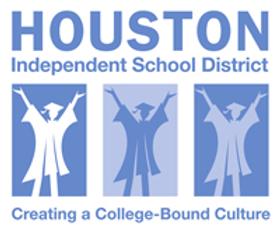The debate over school choice is a heated one in Houston Independent Public Schools, one of the largest school systems in the country. A new plan introduced in the state legislature is bringing the question of school choice into the limelight in Texas once again. The Houston district is weighing all sides of the issue, from the potential money-saving benefits to the possibility of a higher quality of instruction for students across the district.
What is School Choice?
According to the Examiner, school choice involves the ability of families to choose the best education option for their children. Options might include neighborhood public, charter, magnet, and private schools. Some families might also opt for online or homeschooling with this model. With a school choice option, families can take the tax dollars that would typically go directly into the school district where they live and put that money into the form of education that they determine is best for their individual child.
The new plan introduced to the Texas legislature allows a variety of “choice” options, according to The Villager. These might include allowing companies to enjoy a cut in state franchise taxes if they contribute to private school scholarship programs and traditional “choice” measures, including school options across district lines and lifting enrollment caps on current charter schools. Also known as a school voucher system, the plan would allow families to use their tax dollars to offset tuition at private schools if they choose, in the form of grants or scholarships.
This video reports on the current school choice situation in Houston.
Why Houston Wants Choice
The Houston Chronicle reports that the urban school district in Houston has a student body with a large percentage of minority students and students who come from low-income families. District officials assert that it takes a significant amount of district resources to educate some of the students, including time, effort, and money. More than 36,000 students in the Houston school district are on the wait list for the top charter schools in the area. About 68,000 in the district have transferred from their neighborhood schools to other Houston schools, including the popular charter schools in the area.
In response to some of the issues facing Houston schools and the high demand for schooling outside the traditional neighborhood schools, many have called for a voucher system that allows families to choose the best schools for their children. Those in favor of such a system have cited the increased accountability for individual schools as a reason for encouraging school choice. According to school choice advocates, this type of system encourages healthy competition among schools by allowing parents to choose the highest-performing schools for their children.
However, those opposed to such measures assert that a voucher system will take money away from public schools that desperately need the funding. Some have also stated that the current public school system works just fine in some areas, indicating the problem is not in the public system itself but in those assigned to oversee districts. The Villager specifically cites the success of the Conroe Independent School District, which boasts a graduation rate of 97 percent and consistently high academic ratings.
Unfortunately, Houston Independent School District is not enjoying the same record of success. According to a separate article in the Houston Chronicle, the graduation rate for this district was 78.9 percent during the 2009-2010 school year. While this rate improved over previous years, it was far behind the stellar completion rate of Conroe, as well as other states across the country.
The Charter Advantage
In addition to providing more choices to low-income families, advocates of school choice programs point to the ability to expand charter schools in the Houston area. The Chronicle reports that charter schools in the Houston school district currently receive less funding than other public schools in the district, which prohibits them from increasing the size of their student bodies. However, other public schools in the district are restricted in developing education models similar to the successful charter schools in the area, due to state regulations restricting their ability to hire qualified teachers and administrators.
To address these issues, Houston Superintendent Terry Grier and other educators in the district are touting a new education model that allows traditional schools to follow the model of successful charter schools in the district. This might include features like extended school days and additional tutoring opportunities that have contributed to the success of top Houston charter schools. Charter school leaders will also continue the search for opportunities to expand, even though these schools receive less funding per student than traditional public schools in the district.
Currently, the Houston Independent School District receives $11,279 in student funding for each student in the district. By the same token, the top charter schools in the district, KIPP and YES Prep, receive $11,100 and $10,059, respectively. Student diversity is greater at the two charter schools, and teacher turnover rates are higher. Even with these statistics, charter schools manage to consistently outperform traditional public schools in the district, making these schools the institutions of choice for many parents.
With new legislation on the floor and advocates on both sides of the issue, the debate over school choice in the Houston Independent School District will likely continue. Amid the discussion lies the unavoidable fact that changes must be made to Houston's current public school system to ensure more students can succeed in this massive school district.
Questions? Contact us on Facebook. @publicschoolreview















